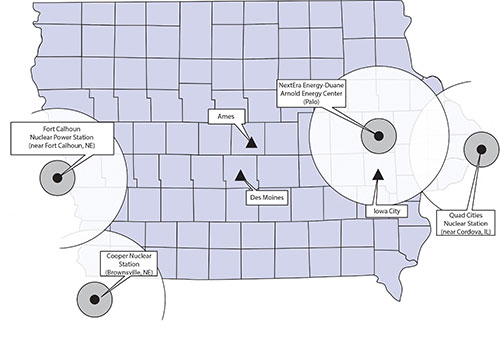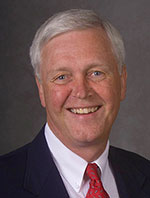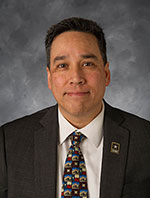
The RERT members maintain emergency preparedness for four nuclear locations in or bordering Iowa.
The RERT is part of Iowa’s Radiological Emergency Response program. This group provides field monitoring, technical consultation and initial accident assessment in coordination with the Iowa Department of Public Health.
The team also works with Iowa Homeland Security and Emergency Management Division to prepare for the unlikely event of an act of terrorism or an accident at one of the four nuclear power plants in or near Iowa. The role of the Hygienic Laboratory’s RERT is to evaluate the extent to which radioactive materials have been released from an incident.
In Iowa, responding organizations to a radiological emergency communicate, share and aggregate data through the RadResponder Network. Chainbridge Technologies maintains this network. Its staff participated in the RERT field team training to share best practices and better understand how Iowa uses the network. This interaction led to improved utilization of RadResponder and provided an opportunity to suggest modifications that address needs unique to Iowa.
Federal guidelines require emergency planning for areas within a 10-mile and a 50-mile radius of a nuclear power station. The laboratory also provides the following services:
- Field surveillance and monitoring of radiation levels, including coordination of environmental sampling with state and federal agencies;
- Dose assessment in support of IDPH programs;
- Laboratory analysis and support of environmental sampling and radiological monitoring activities during an emergency and post emergency;
- Maintenance and communication of data relating to radiation exposure and contamination; and
- Technical expertise for local emergency response personnel for monitoring and decontamination of evacuees.
HIGHLIGHTS
- Hosted annual field team training with 38 participants representing 10 different local, state and federal agencies, and three utilities.
- Participated in five drills: four drills at Duane Arnold Energy Center in Palo, Iowa, and one at Ft. Calhoun Nuclear Station in Nebraska. (Drills are non-federally evaluated practice events, generally held quarterly.)
- Participated in a rehearsal and evaluated emergency phase exercises for the Quad Cities Nuclear Station near Cordova, Ill. (A rehearsal is considered a practice before a federally evaluated exercise.)
- Evaluated by FEMA Region 7 onsite at the Radiochemistry Laboratory.
- Continued to implement the Rad Responder Network. This network assists in rapidly recording, sharing and aggregating large quantities of data during a radiological emergency.



